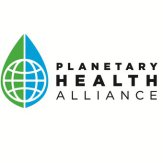THE CATHOLIC CHURCH JOURNEYING TOWARDS CARE FOR OUR COMMON HOME. Five Years after Laudato Si’
Interdicasterial Working Group of the Holy See on Integral Ecology:JOURNEYING TOWARDS CARE FOR OUR COMMON HOME Five Years after Laudato Si’:The present text is being published on 31 May 2020, the Solemnity of Pentecost, the liturgical feast on which, five years earlier, on 24 May 2015, the Encyclical Letter Laudato Si’ of the Holy Father Pope Francis on care for our common home was published. The present document was prepared by institutions belonging to the Interdicasterial Working Group of the Holy See on Integral Ecology, established in 2015 for the promotion and implementation of integral ecology. The Working Group brings together the institutions associated with the Holy See that are most involved in this area, as well as several Episcopal Conferences and Catholic organizations.
Journey Towards Care for Our Common Home[...]
PDF-Dokument [4.6 MB]
Several Vatican Dicasteries team up to release a document entitled “Journeying for the care of the common home”, which offers a guide to all Christians on how to maintain a healthy relationship with Creation.
“Journeying for the care of the common h[...]
PDF-Dokument [137.7 KB]
In-cammino-per-la-cura-della-casa-comune[...]
PDF-Dokument [1.3 MB]
Laudato Si Practise in the Vatican
Gudrun Sailer, Vatican News 22.06.2020
Solar cells, waste separation, water recycling, electric cars, energy-saving lamps: the Vatican has been doing many things for years to improve the ecological balance in the papal state. The Secretary General of the Governorate, Bishop Fernando Vérgez Alzaga, presented an overview in the Vatican a few days ago.
Not only since Laudato si', the teaching letter of Pope Francis published exactly five years ago, the Vatican wants to orientate itself ecologically. Rather the green turn in the smallest state of the world already began under Francis' predecessor Benedict XVI, to whom the media at that time apostrophized as "green pope". The beginning was made by the solar cells on the roof of the papal audience hall, explains Bishop Vérgez, they were the first visible sign. The system went into operation in November 2008, a gift from the German company Solarworld, at the time one of the big players in the photovoltaic industry.
Cafeteria with solar air conditioning
"The solar cells produce energy without emitting polluting substances," says the bishop. "This was in line with the goals we had set ourselves to reduce resource consumption. That's why the solar cells in the audience hall were only the first in a whole series." For example, solar cells have long since been producing electricity at the Vatican Observatory in Tucson, Arizona, a branch of the observatory at the Castelgandolfo Papal Summer Residence. This has considerably reduced energy costs as well as carbon emissions, the bishop explains. In the Vatican itself, a solar-powered air conditioning system for the company canteen was launched in 2009.
Lighting
Light is also a major fixed point in the Vatican's energy consumption. "There is an ongoing renewal of the power systems with LED lights, twilight and the latest generation of sensors that adjust the intensity of light to the fluctuations of natural light," said the Governorate General Secretary. He cites the ceiling of the Sistine Chapel as an example: minus 60 percent electricity costs and greenhouse gas emissions. The new lighting in St. Peter's Square and St. Peter's Basilica has reduced the costs of electricity and greenhouse gas emissions by as much as 80 percent. Incidentally, a German company was at work here too. The traditional Munich-based company Osram lent expertise and regularly sent lighting specialists to the Vatican.
In addition, Vérgez explains, an automatic machine now switches the lights off at the end of the working day. Electrical transformers, which produce a lot of heat in addition to electricity, were taken out of service, particularly at the Vatican's data processing centre, where the state's largest computers are located.
Reforestation in the Vatican Gardens
And the Vatican Gardens? There too, in the green jewel of the papal state, the aim of defending the common house was taken to heart. "With the organic gardens project, for example, in just three years we have succeeded in doing without chemical weedkillers," the bishop reports. "In this way we have given space to biodiversity and now use products of natural origin to eliminate weeds, as well as organic fertilizers".
The nursery has also carried out a census of the plant population - with consequences. "This has led to the reforestation of the State with the planting of 250 new tall trees, where they had been removed over time, and the renewal of about 2,300 hedge plants characteristic of the Vatican Gardens".
The Vatican and water
Also with the topic water, which is dear to the Pope in Laudato si', the Vatican state has reformed itself. The motto is: save water. At present, closed circuits are being set up for the water treatment of the exactly 100 wells in the Vatican Gardens, the same water, incidentally, that feeds the fire-fighting network within the Leonine Walls. Engineers are also currently working on the renewal of the Gardens' irrigation system, which dates back to the years after 1929. Here too, the latest technology is being used, with forms of automation and rational use of water, which also takes account of the weather conditions - "a project that will allow savings of around 60 percent of water resources".









